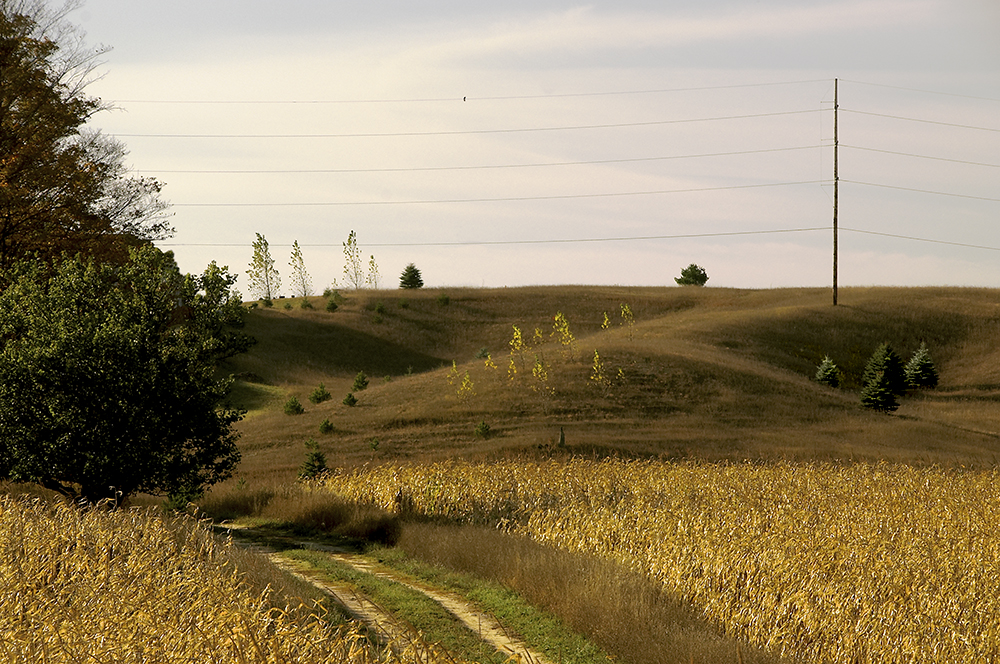Geoff Baker
2583 Kingston Rd.
Cleveland Hts., OH 44118
March 2, 2023
Mr. Alec Jarvis
Executive Vice President & Chief Legal Officer
Wheeling and Lake Erie Railway Company
100 First Street
Brewster, OH 44613
Subject: Potential Wetland and Environmental Catastrophe
Tinker’s Creek State Nature Preserve
Site: “Old Mill Rd” Aurora, Ohio
Dear Mr. Jarvis,
By way of introduction, my name is Geoff Baker and I am a private citizen who resides in Cleveland Hts., Ohio. I am writing with regard to what is the recent, ongoing, and presumably unintended destruction of a wetland by W&LE. Your company recently replaced or perhaps contracted to replace a culvert beneath a section of track that bisects an area of Summit and Portage counties known broadly as the Tinker’s Creek State Nature Preserve. The railway runs on a north/south line through Aurora, Ohio where the tracks establish the western boundary of the marsh (wetland) as they proceed north of the Old Mill Road crossing. The property I have referenced is a natural wetland acquired in the late 60’s from a Mr. Schweitzer, an Aurora resident, and is now owned and managed by the Summit County Metroparks. Sitting on the border of Summit and Portage County, the marsh extends east of the tracks perhaps a half mile and also connects with hundreds of acres of wetlands that are located on the south side of Old Mill Road.
The damage to which I have alluded began a couple of months ago when crews replaced a culvert and enlarged a drainage basin about 100 yards north of the Old Mill Road crossing. The new culvert, which by appearances is significantly larger than the one it replaced, runs under the tracks from the east side of the marsh to the west where it drains into Tinker’s Creek. During the course of replacing the culvert, critical brush and vegetation that previously had served to restrict the flow of water were removed, further exacerbating the damage. The consequence has been to drain the wetland leaving in its place only root vegetation (waterlilies, rush, etc.) that previously existed below the waterline, thereby exposing sand and silt and creating a virtual mud flat with shallow puddles ranging from 6”-8”. By comparison, the depth of water had averaged three to four feet throughout the 70 years I’ve lived in this area. Also of note, the water has never posed a threat to the bed of the tracks which is significantly elevated above the wetlands.
This is a particularly important wetland that dates back centuries and is one of northeast Ohio’s premier wildlife and waterfowl migration and nesting areas. My familiarity with the wetland began as a child in the early 50’s when the area served as a duck hunting preserve owned by the Schweitzer’s. I know the property intimately having hunted and trapped there as a boy until the late 60’s. Since then, it has been the subject of my landscape photography that has been exhibited in various museums and galleries around the country.
The marsh (wetland) hosts spring and fall waterfowl migrations and provides a nesting haven for wood duck, mallards, pintail ducks and Canada geese. Other species that rely on its sanctuary include blue and green wing teal, redhead, ringneck, and bufflehead ducks as well as great blue herons, trumpeter swans, kingfishers, red-tailed hawks and abundant other wildlife that depend on an extant wetland for survival. Bald eagles continue to occupy their nest at the east end of the marsh due to an eminently successful restoration initiative that captured the attention of national environmentalists. And though the eagles have flourished for over three decades, the loss of habitat will present a significant challenge to their survival.
Finally, I must confess with some embarrassment that this appeal is unprecedented for I have never assumed the role of an activist, environmental or otherwise. In a corporate life much of my career was spent as a senior executive with Republic Steel where I was cognizant and supportive of our role to steward the environment, though I never did so as a “cheerleader” – a regret in retrospect for one who has been a lifelong beneficiary of other activists and who still finds refuge in this beautiful marsh.
Recently, I have engaged the interest and goodwill of the Summit County Metroparks, Ohio Department of Natural Resources, the Tinker’s Creek Watershed Partners; and have spoken or met with their senior leadership, all of whom recognize the urgency and are prepared to advocate for its immediate remediation. However, before I contact the Army Corps of Engineers and Ohio EPA regarding enforcement options, I wanted to advise you of the situation directly in the hope you can address the problem before the migration is fully underway by the end of March. The solution may be as simple as adding a gate or some other flow restriction to the culvert to control the level of the marsh.
I will send this by conventional mail tomorrow but wanted to bring it to your attention before another day elapsed. I have attached images illustrating the marsh as it appears pursuant to the installation of the new culvert as well as images as it has appeared throughout my lifetime and perhaps millennia. In light of the urgency and broader public relations and commercial implications I have included Messrs. Parsons, Chastek and Rottman. Thank you for your immediate attention and consideration.
Very truly yours,
Geoff Baker
CC: Larry R. Parsons, Chief Executive Officer
Jonathan Chastek, President

BEFORE W&LE DESTRUCTION Pastel Spring

AFTER “The sedge is wither’d from the lake,
And no birds sing.” John Keats


 “The Sun is but a Morning Star” H.D. Thoreau
“The Sun is but a Morning Star” H.D. Thoreau




 “Toward Heaven Still”
“Toward Heaven Still”